Once you’re done enjoying your inflatable paddle board, you want to pack up your stuff and get back home as soon as you can. The last thing you want is trouble when deflating the board.
We’re here to make your life a little easier with two quick ways to deflate your paddle board. See which one suits you best!
How to Deflate a Paddle Board?
Method 1
Things you need
- Paddle board
- Tiki pump
Locate and release the valve
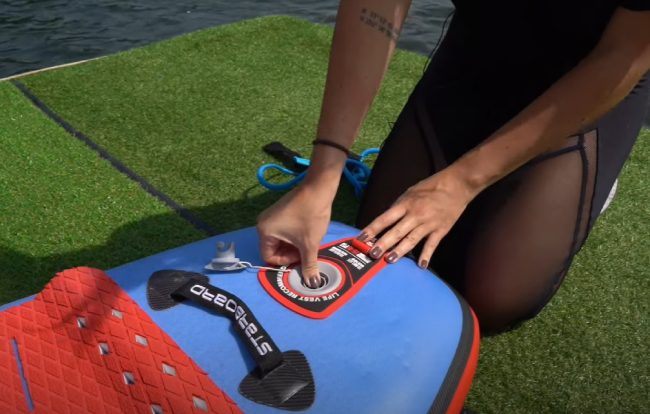
Rotate the valve counterclockwise to release.
Press the pin down so the air starts to exceed. You may find the air release a little loud.
Release the inner chamber in the same process (Optional)
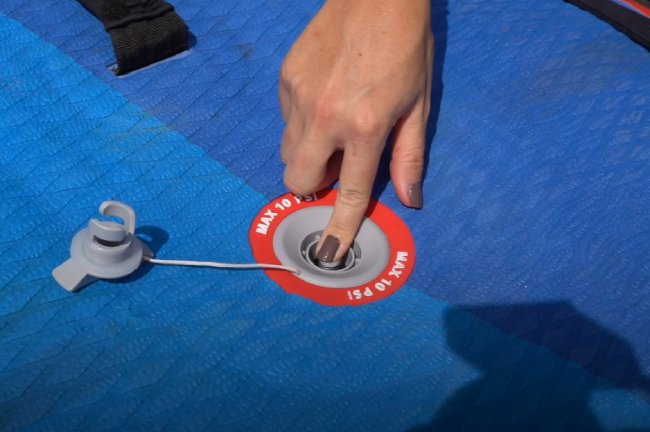
Follow the same procedure to release the inner chamber and push the board down so that the air goes out.
Use a tiki pump for a faster air release
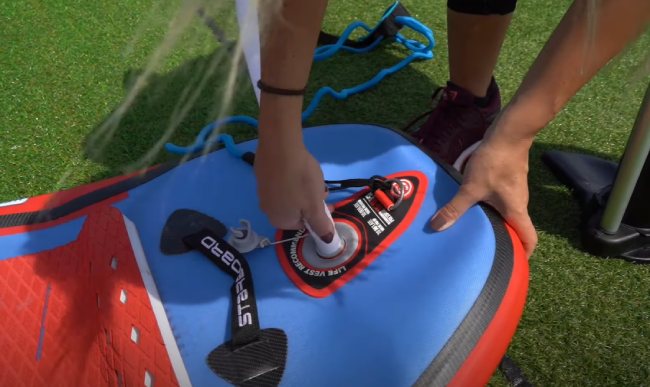
Connect one end of the hose to the tiki pump in the deflate mode and the other end to the release valve with the pin down.
Start to pump so that the board starts to deflate faster.
Fold the board from the nose to the tail
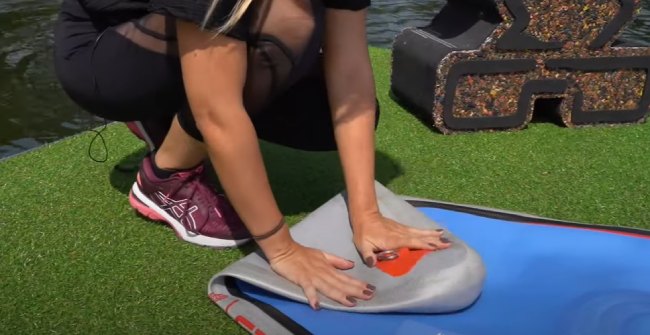
Pick up the nose to fold the board until you reach the tail.
Press the board down when you fold to keep it perfect and tight.
Cover valves when you fold

Make sure the pin is up and the valve is covered when you reach a valve point.
This prevents any dust from going in off the board.
Put the board inside the bag
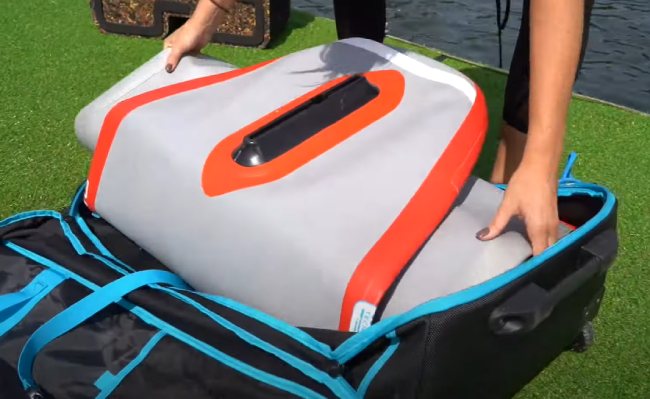
Keep the folded board beside the carrying bag with the fin on top of other folds.
Grab the board on each side to put it inside the bag. Make sure the fin stays on top.
Tie up the board
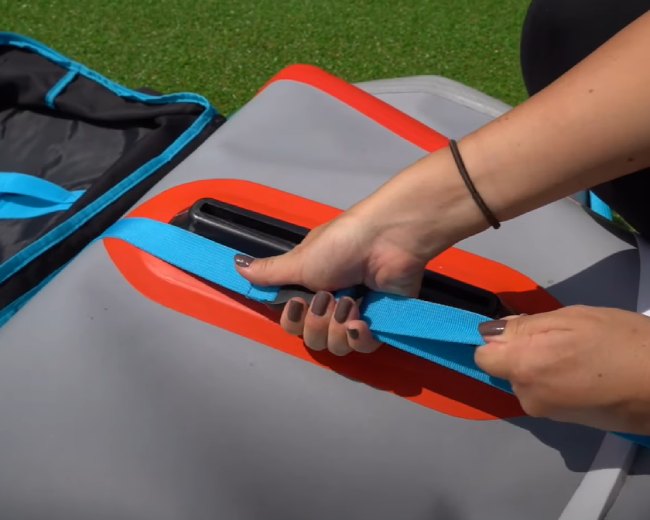
Close the compression belts and adjust them if needed.
Pack the accessories
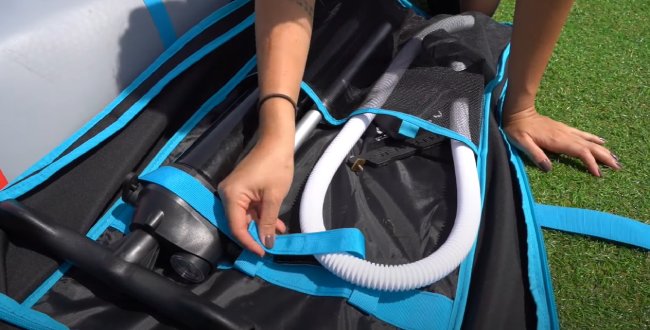
Detach the base of the tiki pump before you put it inside the bag. Put the hose pipe beside the pump and secure them both in place with a strap.
Close the bag
Secure the bag with the zipper around and lock down the strap.
Make sure the strap goes past the handle.
Method 2
Step 1: Gather necessary items
-
- Paddle board
- Paddle board carrying bag
Step 2: Put the board upside down
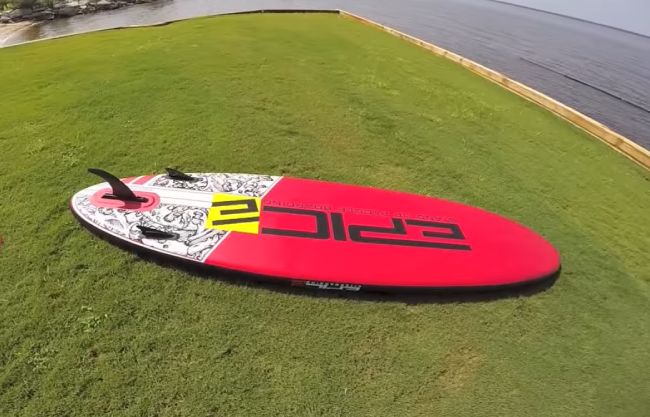
Keep the board on a flat surface with the bottom facing up so that the fin doesn’t brake.
Step 3: Unscrew and remove the fin
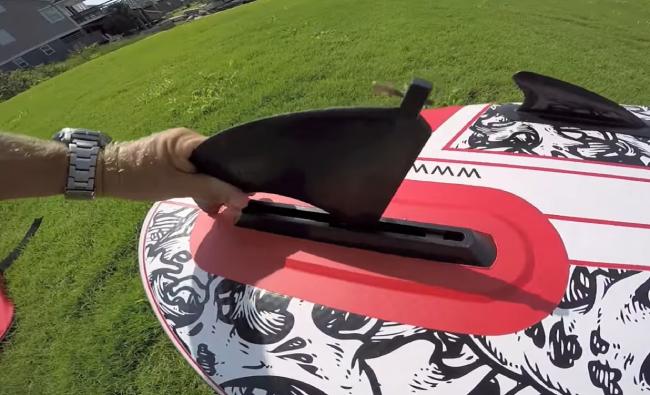
Use your hand to unscrew the fin and slide it out.
Put the screw back into the nut inside the slide. Pull the nut out with the screw and put them inside the fin so you don’t lose them.
Step 4: Turn the board around
Keep the fin and screws aside and turn the board around to find the release valve.
Step 5 (Option 1): Push the release valve
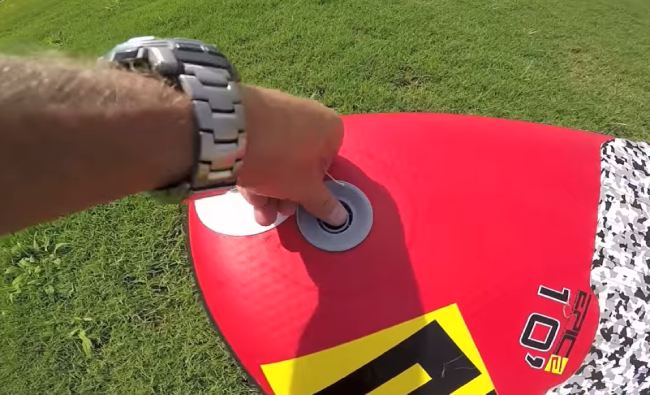
Remove the cap before you push the release valve.
The valve will deflate as long as you push it down with your finger.
Step 5 (Option 2): Twist the release valve
Another way is to twist the valve for permanent air release.
The valve keeps deflating when twisted so you don’t have to push with your finger till all the air is out.
Step 6: Fold and push the board with your hands
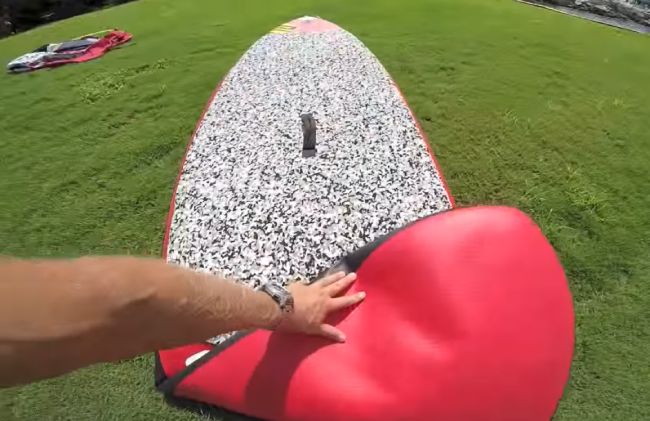
Fold the board from the other side and push it with your hands.
Walk on the board all the way to the release valve so that the air goes out.
Step 7: Push the air out
Deflate the board with your body while folding with your hands.
Make sure to push the air all the way out so there’s nothing left inside.
Step 8: Flip the board around and start to fold
Unfold and flip the board around so that the bottom looks up.
Now fold the board six times but remember to push the air out during the process.
Step 9: Twist the valve back to the normal position
Set the valve to the normal position or it will push down when you try to inflate the board later.
Step 10: Put the board in the bag
Open the bag and straps and put the folded board inside.
Push the board on the side so that it fits in.
Step 11: Tighten the straps and close the chain
Put the straps in and pull them hard.
Squeeze the bag between your legs to close the chain both ways.
Step 12: Don’t forget the accessories
Put the air pump and hose inside before you completely close the bag.
Keep the fin and repair kits in the accessories pocket.
Quick tips to deflate your paddle board
-
Always roll your board around your pump
Rolling the board around the pump unit is easier than rolling with bare hands. This technique allows you to roll against something nice and firm.
-
Be careful about the fin box
You need to roll the right way when you have a US fin box to prevent putting strain on the box and the board material.
Don’t force the fin box around the corner of a roll. A constant push down may wear the corners of the front and back of the fin box.
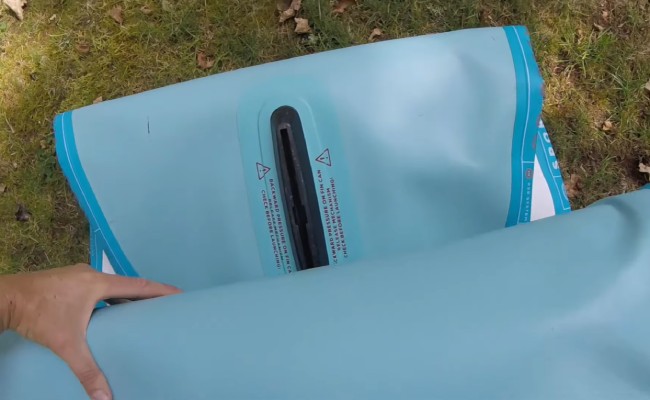
A great solution is to unroll the board and leave the fin box flat against the top of the deck. Roll the board over the top of the fin box so that the box remains nice and flat.
This allows the fin box and other materials to be in a better condition.
-
Flat section against your back
Put the board in the bag in a way that the flat section stays against your back when you carry it. This helps prevent the fin box from jabbing in the back and makes your long-distance walk more comfortable.
FAQs
1. How to find a leak in an inflatable paddle board?
Ans. Pour soapy water over the seams when the board is fully inflated. Spread the suds with a rag and check if there’s any tiny bubbles. The bubbles will show up in the leaked areas.
2. Do I need to wax the top of the paddle board?
Ans. Most inflatable boats have a rubber traction on top that provides fine grip so you don’t need to think about waxing.
3. What happens if my inflatable paddle board hits a dock or debris?
Ans. Most of these boards are durable so you will only find a scuff on the board after hitting a dock or branches. Stay away from sharp objects and avoid dragging the board on gravel.

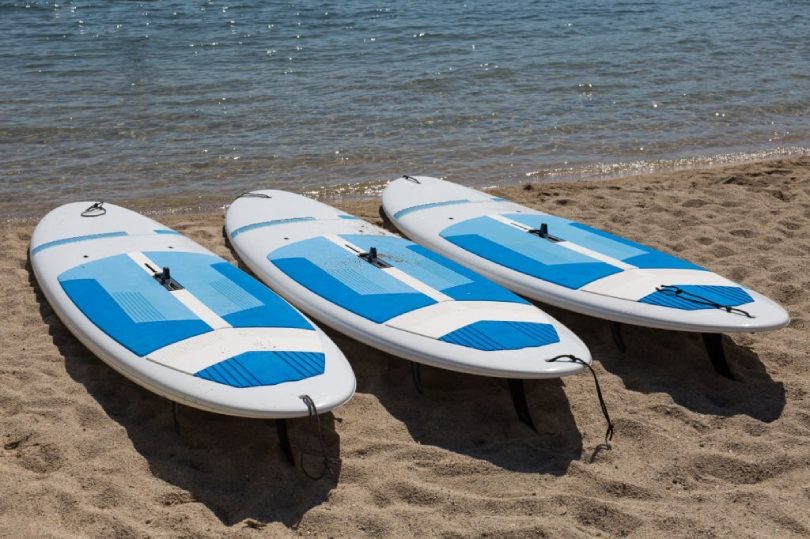






Leave a Comment